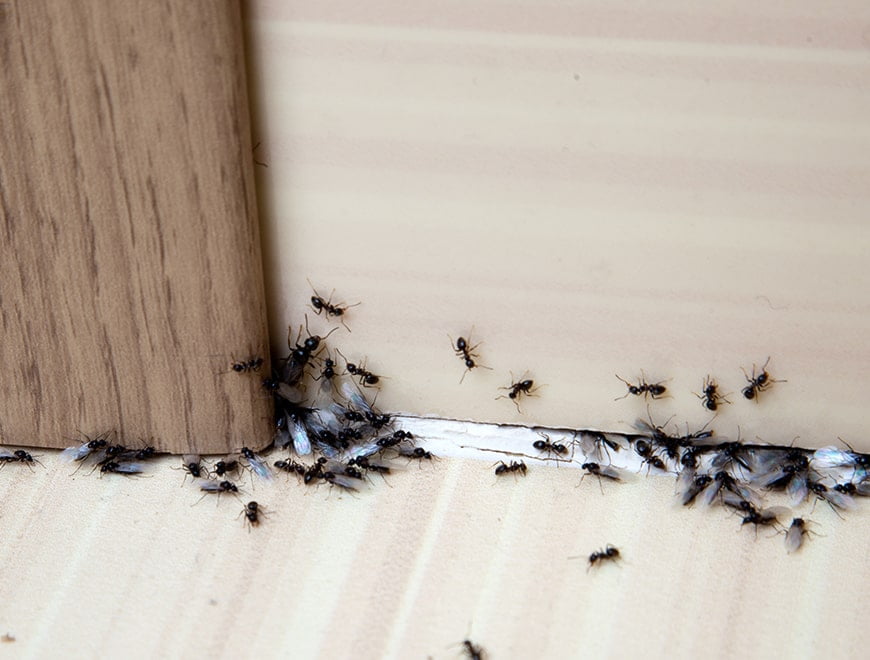Like termites, carpenter ants bore into wood, but unlike termites, they don’t eat it. For these busy ants, the wood only provides a nest, not food, and their little deposits of sawdust-like chewed up wood called “frass” are often what gives them away.
Carpenter ants are also given away by their noise. They’re such tireless workers that you can hear them scratching away inside floorboards or roof beams as they excavate their enormous networks of tunnels and nests.
As you can imagine, the cost implications of a carpenter ant infestation are serious. Their nests can weaken wooden structures to the point they need to be replaced – and that’s if they’re discovered. If they’re not, they could cause structural collapse.
Luckily, these ants are still very rare in London, but our abundance of period buildings provides them with the perfect habitat should they become established here.
If you spot these large, jet-black ants or evidence of their nests, please call us immediately so we can stop the spread of this destructive pest.












